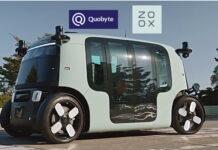Komprise has updated its Elastic Data Migration (EDM) tech with automated destination share and user/permission mapping.
EDM ships unstructured data from a source to a target system. EDM v1.0 in 2020 took file data from an NFS or SMB/CIFS source and transferred it across a LAN or WAN to a target NAS system or, via S3 or NFS/SMB, to object storage systems or the public cloud. It used parallel transfers and was claimed to be up to 27 times faster than Linux rsync.
In 2022, EDM v4.0 provided up to 25x faster small file uploads to the public cloud with a so-called Hypertransfer feature, matching NFS transfer speed, according to Komprise. EDM v5.0 in 2023 enabled users and applications to add, modify, and delete data on the destination shares during the warm cutover period, when the last changes made on the source are copied to the destination. This, we’re told, eliminated downtime while the migration process was completed and the source data access switched off. Now we have a spring 2025 release.

Krishna Subramanian, COO and co-founder of Komprise, said: “IT leaders are looking for efficiencies across the board and data migrations can incur unnecessary extra costs and risks. Komprise has features that help stakeholders align on which unstructured data to move, automation to set up migrations and detailed reporting for ongoing data governance.”
According to Komprise, this latest EDM release provides:
- Automatic creation and mapping of destination shares which directly map source hierarchies to the destination to increase transparency and minimize compliance risks, eliminating manual mapping from source to target shares with its high error risk when thousands of shares are involved.
- Automated user/permission mapping with a security identifier (SID) mapping, automating the process of changing owner and group permissions when migrating files based on customer-defined mapping policies. SID mapping saves time and lowers the risk of manual user/permission mapping errors.
- Automatic generation of consolidated chain-of-custody reports listing each file’s source and destination checksums and timestamps for the migration. Chain of custody is often required in regulated industries to serve as evidence of successful transfers.
- Transparent Share Mapping for Tiering: A migration is an opportunity to put old data in cheaper storage. Komprise says it can reveal cold data and have EDM tier it to object storage, reducing the need for new storage capacity. It allows transparent 1-1 mapping from file shares to object buckets so data owners can see the original file data hierarchy represented in a similar structure in the destination object buckets.
Transparent share mapping provides transparent visibility into data lineage for AI data governance.

Komprise suggests that when organizations have centralized storage teams supporting multiple departments, each with their own share hierarchies, EDM’s automatic creation of destination shares from source hierarchies minimizes compliance risks. It also says that users can pick any source – NFS, SMB, Dual, Object – and choose a destination. Komprise EDM then does the rest.
EDM, available both for Azure and AWS, can be obtained as a separate service or as part of Komprise’s Intelligent Data Management offering. Learn more here.
Bootnote
Datadobi’s DobiMigrate also automates the replication of data hierarchies, within a single migration NFS, SMB or S3 environment, by scanning the source environment and replicating the directory structures, file paths, and associated metadata (e.g. permissions, timestamps) to the target. Multi-protocol migrations may require separate runs. Chain-of-custody technology with hash validation is used to ensure data integrity during the process.








